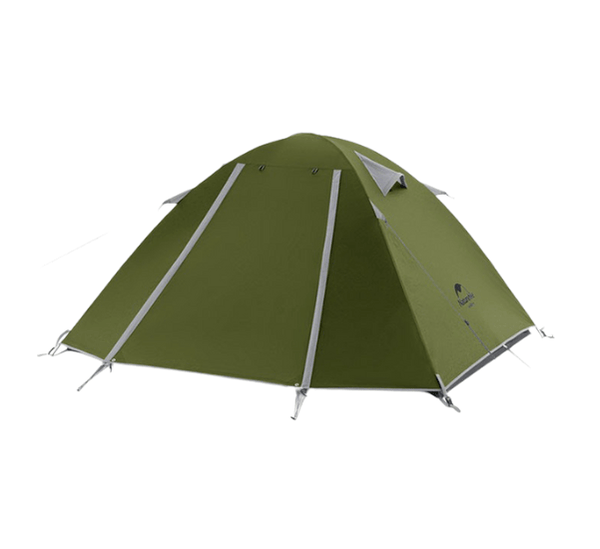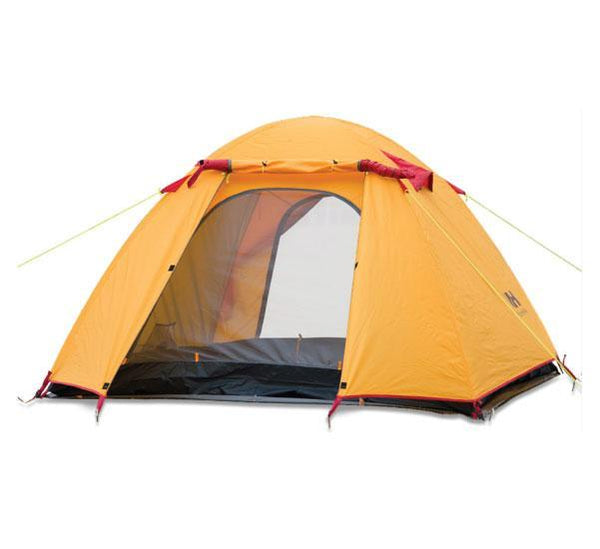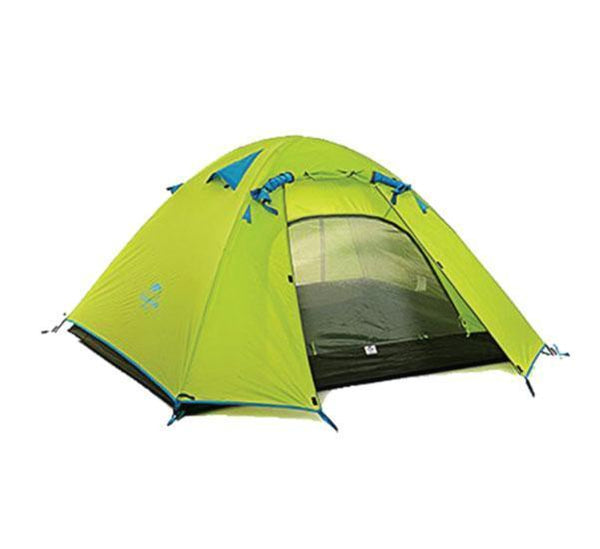- No products in the cart.
When it comes to family tent camping, there are three things that you will need to keep track of: wind, rain, and temperature.
There are many risks and hazards of camping- traditional ones like weather conditions and wildlife, but there is one with a relatively simple solution- the wind. Considering extreme winds when building tents, you will know how much of a tent a manufacturer has designed to handle heavy winds.
When shopping for a tent, more than just what is on the outside can be significant. A tent also involves a frame, and its durability depends significantly on how a user pitches it. So, let me explain in detail those factors that affect wind speed and how you can choose the best quality tent for your needs.
How Much Wind Can a Tent Withstand?
When shopping for the best family tent, consider how well the tent will handle wind. Also, find out how lightweight or strong the tent is since manufacturers create different tents for different needs and conditions.
At high speeds, your lighter-weight family camping tents are more likely to struggle to remain standing due to their weaker materials. A three and four-season tent may provide better wind resistance, but if you plan correctly, you will find them much more robust than your lightweight options.
Depending on your camping needs, there are three main differences to distinguish. First, ultralight backpacking tents are durable and lightweight, whereas manufacturers design four-season tents for a warmer and wetter climate.
Secondly, three-season tents have spacious interiors that you can utilize in less extreme conditions. Manufacturers designed four-season tents to be lightweight and compact. As a result, they typically offer less protection than three-season tents, but they are often more affordable.
Finally, three-season tents offer a sensible choice regarding coverage features, other features, or quantities. These tents are perfect for big campers who might want to try something new for this coming camping season or adventurous backpackers looking for versatility for all four seasons.
Ultralight family tents for camping provide minimal wind resistance, which is a necessity for these tents due to their weight. Even though these tents are available at a lower price, they usually offer less coverage than other types. That is because there is not much windproofing on them.
Because of their lighter weight and more streamlined construction, three-season tents are best for warm-weather camping in the summer with light to moderate winds. When it is cold, use a winter hiking tent. For heavier snowfall, you can use a four-season tent.
If you are looking for the best tent for a family of 4, you will want to know the coverage that is right for you. If you want to camp outside in an area with strong winds, consider buying a family tent offering more coverage range. For those camping in places with heavier snowfall, camping in smaller sizes may be more beneficial.
Image From: Speedy 3 - 2.4 Kg Hiking Tent - Green
Factors Influencing the Wind Speed a Tent Can Withstand
It depends on a few factors: the brand, the frame material, durability, and others. Also, here are some other factors:
Tent Types
Not all tents are precisely the same. Tents may come with a weather rating for you to determine whether they can handle harmful and harsh weather conditions.
The Direction of the Wind
The wind's position can significantly impact how much it puts pressure on your tent. For example, if the wind is coming directly against the tent, it will put more stress on it and make it more likely to collapse. However, if the wind blows parallelly or at an angle across the top, it puts less strain on your tent.
The Design of the Tent
If you are looking for the best family tent in Australia, going a dome-shaped tent is the one you should consider. A dome-shaped tent is known to be more stable in handling winds due to its aerodynamic design. A single-wall tent may weigh less than a two-piece, but they are often more flexible and versatile.
The Material of the Tent
Manufacturers often use synthetic materials to build most of the family tents in Australia that you can find online. Tents made with synthetic materials are typically less likely to stretch or tear because of their structure, so verifying your choice of materials before purchase is essential.
Guy Lines
Some tents come with guy lines but purchase them separately. They can help hold the tent down, helping it stay in place in strong winds.
The Stakes of the Tent
Fastening your tent to the ground is vital for mitigating the harsh environmental forces. There are a few different types of stakes that you can use depending on the area you are camping in. For example, when you are on soft dirt, stakes will be best suited for placement out of the ground than camping on hard rocks.
The Ratings of Wind Speed
Wind speed ratings are given in miles per hour (mph) to indicate the top limit your tent can withstand before collapsing.
The Wind's Temperature
Weather conditions are a significant factor in what kind of tent you want. Wind and temperature influence how well the tent holds up, so you should consider these two factors when purchasing a new one.
How to Choose a Tent for Windy Conditions?
Once you determine what kind of tent you need, you must consider the wind speed rating, design and material. You will also want to ensure that your tent has guy lines and stakes. The last thing you want is a storm blowing in with blustery conditions.
Wind Shields
If you are heading outdoors, having a windshield is always good. Trees, mountains, and cliffs can form windshields. They can help to block the wind and provide shelter for your campsite.
Wind Threats
However, some natural features can expose your campsite to the wind. For example, if you camp in a valley, the winds will funnel through the valley and may be more potent than if you camp on a hilltop.
The Rating of Wind Speed
When purchasing a tent for camping, it is essential to consider the wind speed rating so that you can have a good idea of how well it will perform during high-wind conditions.
The Design of the Tent
If you are searching for a tent that will withstand high winds, consider dome tents compared to ridge tents. Lighter than the other options, dome tents have a decent amount of space, is more breathable, and are easy to pitch. However, if set up too tall, a ridge tent will not do well in windy areas due to a less aerodynamic and larger surface area exposed to the wind. In addition, if the ropes are not pulled taut and tied loose, the tent's structure will be significantly compromised.
The Material of the Tent
When trying to find the best tent, think about what you will be using the tent for. Natural materials are typically softer and more pliable than synthetic materials. So raw material will be your best bet if you need something rugged, durable and affordable.
There are tons of great reasons to give camping a try. It is an excellent way to spend time with family while ensuring they are safe and enjoying it. Of course, investing in a top-notch three or four-season tent is always a wise idea. But when the winds reach 40 mph, you should head home. Sometimes it is even better to stay home and enjoy your family's happy times.
Available Products
Speedy 3 - 2.4 Kg Hiking Tent – Amber
Image From: Speedy 3 - 2.4 Kg Hiking Tent - Amber
The Speedy Series is perfect if you are looking for a tent that is easy to set up, even if you have no experience! This 3-person camping tent offers a dual-zipper vestibule design so you will avoid getting tangled in the dark when setting up your gear. With great headspace and ample gear storage space, this tent lets you enjoy stunning 360-degree sights without claustrophobia. In addition, it is effortless to set up and does not require any tools, giving newbies a fantastic time with family and friends. Plus, there are two doors inside and easily removable rainfly construction, so they do not have to deal with surprises.
Speedy 4 - 2.9 Kg Hiking Tent - Lime Green
Image From: Speedy 4 - 2.9 Kg Hiking Tent - Lime Green
The Speedy 4 Hiking Tent is perfect for beginners. They are our basic range of camping tents for four people across three seasons. It is big and spacious, has two doors, and has a vestibule space to make getting in and out as effortless as possible. Plus, you and your camping companion have plenty of room for stuff. Setting up camp is always a pain—but our redesigned tent takes the hassle out of it and provides better space with no matter which way you lay your tent.












